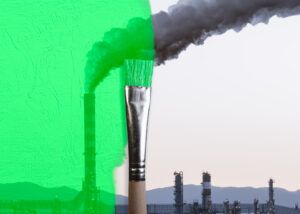In his keynote Tory conference speech, the UK Prime Minister, Boris Johnson spoke about a ‘Green Industrial Revolution’. He said “in 10 years’ time offshore wind will be powering every home in the country”.
A revolution would suggest a sudden, thorough, radical replacement of the current established system with another.
However, the evidence suggests the energy market has been evolving for quite some time. Renewables’ share of electricity generation in the UK increased to 44.6% in Q2 2020 from 35.6% in Q2 2019 – the sector’s share in Q2 2020 being the second highest for renewable generation on record.
The UK is not alone in achieving this remarkable milestone. The first half of 2020 marked a watershed moment in the evolution of the energy mix in the European Union (EU) too, when for the first time, renewable power contributed a bigger share in the European generation mix than fossil fuels. According to environmental group Ember, across the 27 EU nations, about 40% of the electricity generated in the first half of 2020 came from renewable sources, compared with 34% from fossil fuels. (The balance is made up by nuclear and biofuels).
Falling costs
The single biggest driver of this strong evolution is the significant decline in costs achieved by the clean energy sector.
Over the last decade alone, the cost of generating wind energy has fallen dramatically as turbines have evolved into bigger and more powerful machines. The costs of solar and wind power have dropped 85% and 49% respectively from a decade ago. Building new wind or solar capacity now costs less than adding the equivalent in coal or gas plants in two-thirds of the world.
And costs continue to fall. In the UK the price struck for offshore wind at the last auction in September 2019 reduced to £39/MWh – 30% lower than just two years before. The next auction will be held in 2021, when prices could be even more compelling.
Already many countries and corporations have made commitments to grow their clean energy capacity. According to analysis by Bloomberg New Energy Finance, these cumulative commitments by governments and companies represent 826GW of new capacity in wind, solar and other non-hydro renewable power technologies over the course of the next decade. They estimate this could amount to $1trn of investment globally during the next 10 years, or an average of $100bn per year.
And these are just existing clean energy commitments. Based on recent announcements, these estimates are likely to be increased.
Government commitments
Take the €750bn EU stimulus package announced in July for example. This ‘Green Deal’ package had climate change at its heart, with 30% of the entire package dedicated to climate protection and a further commitment that all spending must contribute to EU emissions-cutting goals. This could see nearly €550bn spent on climate change initiatives over the years 2021-27.
But will this help the general economy? A recent report published by Wind Europe has quantified how wind energy can contribute to an economic recovery in Europe. It estimates that the European wind industry has an annual turnover of €60bn and that in 2019 wind energy represented 300,000 jobs across the EU. About three-quarters of these are in onshore wind and the balance are in offshore wind. They also estimate that the wind industry today generates €2.5bn of value added to the EU economy for each new GW of onshore wind installed and €2.1bn for each new GW of offshore wind. Considering the increased targets for offshore wind recently announced by the UK government, these should have a very positive impact on the economy.
If we look to the US, Presidential candidate Joe Biden has announced a very ambitious Green Plan. He plans to spend approximately $2trn over the first four years of his potential presidency and to achieve net zero emissions economy-wide by 2050. His plan is broad ranging with multiple goals, including achieving a carbon free power sector by 2035 and boosting investment in clean energy innovation. His plan also wishes to promote the auto industry’s transition to electric vehicles, the construction of greener buildings and decarbonizing existing ones. He has also stated that the US will re-join the Paris Agreement on climate change.
In an announcement to the UN General Assembly in September 2020, President Xi Jinping surprised other nations as he pledged that China would hit peak CO2 emissions before 2030 and be carbon-neutral by 2060. The Chinese primary energy mix will need to evolve further to achieve these emissions reduction targets. As it shifts to cleaner energy sources, we believe solar and wind companies should be the biggest beneficiaries.
The evolution of our energy industry is happening. Of that there is no doubt. It is ironic that the fossil fuel reserves could indeed remain as ‘fossils’ while the new greener technologies once considered too immature will become the dominant species. This evolution brings enormous opportunities for companies and shareholders who invest in those companies.
For those who have studied and acknowledged what is occurring, it’s an evolution – but equally for those in denial, with their head in the sand, some day they too will wake up to what will then appear to be a revolution!








